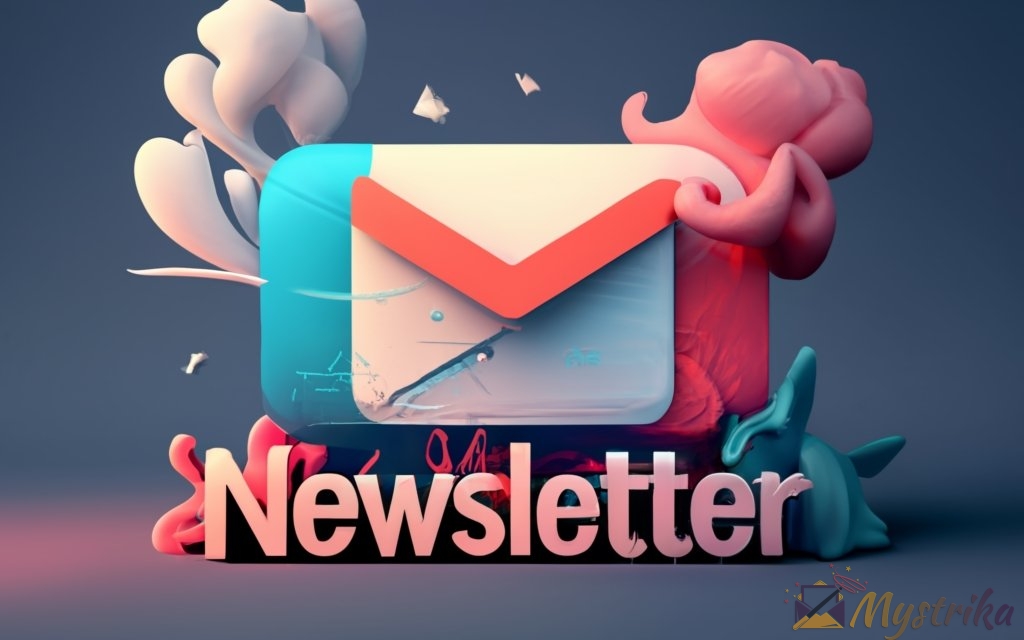Want to reach your audience beyond social media? Email newsletters are making a big comeback! In this comprehensive guide, learn how to tap into Gmail’s free tools to create beautiful, engaging newsletters.
We’ll walk through how to:
- Set up your account for newsletter sending
- Easily build subscriber lists
- Design great-looking content with Google Docs
- Write compelling subject lines for opens
- Track engagement and optimize over time
- Automate scheduling recurring broadcasts
- And more!
Take your business’s marketing to the next level by embracing Gmail as your all-in-one newsletter solution. Time to extend your reach beyond the inbox.
Overview of Creating Newsletters in Gmail
Email newsletters are making a comeback! While social media is great, email remains one of the most effective ways to reach your audience. And with Gmail being the world’s most popular email service, it makes sense to tap into Google’s powerful infrastructure to send your next newsletter.
In this guide, we’ll walk through everything you need to know to create beautiful, engaging newsletters right within Gmail. Whether you’re just getting started with email marketing or looking for a simpler newsletter alternative to Mailchimp or Constant Contact, sending newsletters through Gmail is a great option.
We’ll cover:
- Why Gmail is a great choice for sending newsletters
- Step-by-step instructions for creating your newsletter content, importing subscribers, scheduling sends, and more
- Tips for designing emails that get opened and read
- Solutions for overcoming Gmail newsletter limitations
- Alternatives to explore once you outgrow Gmail
So brew a fresh cup of coffee (extra shot of espresso if you need it!), cozy up at your laptop, and let’s dive in to the wonderful world of Gmail newsletters together.
Why Send Your Newsletter through Gmail?
For starters, it’s 100% free – no monthly fees or subscriber limits like other email service providers charge. This makes Gmail ideal if you’re on a tight budget or just starting to build your audience.
Gmail also has a stellar deliverability reputation, meaning your newsletters are more likely to reach the inbox rather than getting caught in spam filters. This is key for ensuring your subscribers actually see your content.
Other advantages include:
- Instant access – No need to setup an account elsewhere. Just use your existing Gmail account.
- Built-in contacts – Easily import people already in your Gmail address book as newsletter subscribers.
- Familiar interface – Composing emails feels natural since you already use Gmail daily.
- Powerful analytics – Track opens, clicks, and unsubscribes right within Gmail.
- Flexible scheduling – Queue up newsletters to send automatically on a recurring schedule.
Now, Gmail isn’t perfect. There are limitations like lack of advanced email design options, no dedicated landing pages, and no automation for segmentation. But for many small business owners, bloggers, and creatives, it has all the core features you need for basic newsletter campaigns.
If you eventually outgrow Gmail’s capabilities, you can always export your list and switch to a paid service down the road. But you might be surprised just how far you can scale with Gmail alone. Big brands like Airbnb even used it to send their newsletter for years before switching platforms.
Let’s get into the nitty gritty of how to make professional newsletters that drive engagement using nothing but Gmail.
Step-by-Step Guide for Building Your First Email Newsletter
While creating great content is critical, you also need to master the mechanics of structuring, formatting, sending, and automating your newsletter emails in Gmail.
Follow these steps to start sending like a pro:
Choose a Dedicated Gmail Account
Don’t send from your personal email. Instead, create a new account specifically for your newsletter – something like [email protected]. This separates your marketing emails from random subscriptions you may have signed up for.
Make sure to complete the Gmail verification process. This confirms you own the account and improves deliverability.
Also set up a professional display name like “Your Company Newsletter” rather than just using your personal name.
Adjust Key Gmail Settings
You’ll want to head into Gmail Settings > See All Settings and update:
- Send mail as – Choose your newsletter display name to appear as the sender.
- Conversation view – Disable this to only see one email per thread.
- Default reply behavior – Set to “Reply all” so you stay looped in on responses.
- Desktop notifications – Turn on for new email alerts.
- Multiple inboxes – Enable to create tabs and organize by content type or send date.
Import Contacts into Subscriber Lists
Now it’s time to build your audience! Upload an Excel CSV file of subscriber emails using Gmail Contacts > Import. This adds them as regular contacts.
Alternatively, encourage people to subscribe by adding a “Join our newsletter” link in your email signature. This lets Gmail automatically add them to your contacts when they sign up.
Segment lists into groups like “VIP Customers,” “Prospects,” “Inactive Subscribers” to target content. Assign contacts to multiple lists as needed.
Pro tip: Export and backup your lists regularly so you never lose those valuable subscribers!
Create Your Email Content in Google Docs
Drafting your newsletter in Google Docs makes formatting content with images a breeze. Just copy/paste text sections and images into a new Gmail message later.
Keep a docs template with your branded header/footer, color scheme, fonts, and logo saved as a starting point for each edition.
Send a Test Email to Yourself
Before blasting your full subscriber list, always send a test to confirm how content appears in the inbox across different email clients.
Does your text wrap correctly? Are custom fonts showing up? How are images displaying? Test on mobile too.
Finding issues now means you can fix formatting before officially sending.
Schedule Future Emails with Canned Responses
Use Gmail canned responses along with filters and labels to automate sending scheduled, recurring newsletters.
For example, set up a filter to apply a “Send Newsletter Tuesday” label. Create a canned response to send emails with that label Tuesdays at 9am.
Review Performance Data
Open and click tracking metrics are readily available within Gmail activity dashboards. Click details to see subscriber engagement and what content resonates.
You can also make data-driven decisions by seeing unsubscribe rates for poorly performing email lists and testing subject lines.
Now you’re off and running with a complete newsletter workflow using just Gmail! The key is sticking to a regular publishing schedule and continually testing and optimizing your campaigns.
In the next sections we’ll dive into tips for creating compelling content and squeezing even more from Gmail. Let’s make sure your hard work gets read.
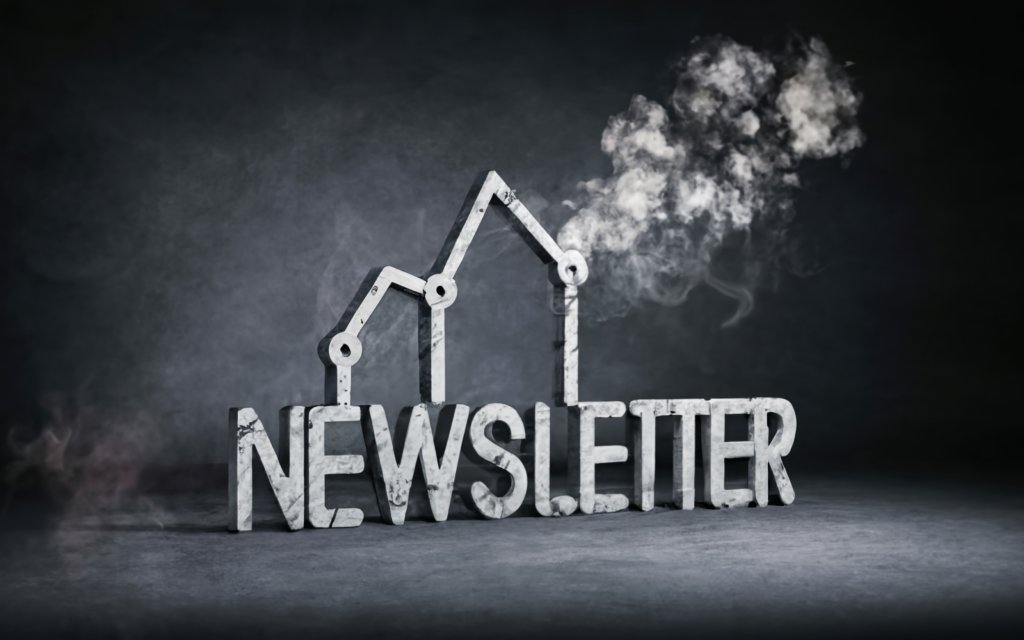
Benefits of Using Gmail for Sending Newsletters
With so many established email service providers out there like Mailchimp, Constant Contact, and ConvertKit, you may be wondering why you should use Gmail for sending your newsletter.
While Gmail lacks some advanced features of paid platforms, it excels in areas that matter most to small businesses and solopreneurs:
It’s Totally Free
This alone makes Gmail the obvious choice if you’re new to email marketing or working with a limited budget.
Paid newsletter services typically charge a monthly fee, with costs based on:
- Number of subscribers
- Number of emails sent
- Advanced features used
For example, Mailchimp’s pricing starts at $9.99/month for up to 500 contacts and unlimited emails. Constant Contact charges $20/month for up to 500 contacts and unlimited emails.
These fees can quickly add up, especially as your subscriber list grows. Even intro tiers with 500-contact limits can feel restrictive fast.
With Gmail, you get:
- No subscriber limits
- No email send limits
- No monthly fees
- Free forever
For bootstrapped startups and solopreneurs already relying on Gmail for their regular email, this free model is appealing. You can build your marketing list using Gmail without seeing your budget eaten up.
And if you do eventually outgrow what Gmail offers, you can always export your list and switch services then. But why pay sooner than you need to?
Quick and Easy Setup
Signing up for most newsletter tools involves registering for a new account, adding billing info, and configuring various settings before sending your first campaign.
With Gmail, your account is already good to go. Just start creating!
Even importing existing contacts is a breeze. Simply export them from another provider as a CSV and upload to Gmail Contacts.
You can be up and running with your first newsletter in practically no time using an interface you already know and love.
Leverages Google’s Powerful Infrastructure
Here are some mind-boggling stats about Gmail:
- Over 1.5 billion active users
- Handles over 100 billion emails per day
- Has 15 GB of free storage per account
- Integrated with other Google tools like Drive and Calendar
When you tap into the world’s largest email service to deliver your newsletter, you benefit from the same proven infrastructure used by billions daily.
Equally important is Gmail’s stellar reputation for reaching the inbox. Google invests heavily in advanced spam filtering to maintain deliverability and keep users happy.
So long as your messaging follows standard best practices, you can be confident your newsletter will actually land in subscribers’ inboxes instead of the junk folder or getting blocked outright.
Easily Import Existing Contacts
3rd-party newsletter providers usually make you start from scratch building your mailing list on their platform.
But odds are, you already have a ton of website subscribers, social followers, past customers, and other leads in your Gmail contacts.
Rather than complicate matters by having siloed lists in different systems, use Gmail’s native ability to instantly segment existing contacts into separate lists for your newsletter segments.
Just apply the appropriate labels like “Newsletter Subscribers,” “VIP Customers,” etc. and set up filters to automatically tag new sign-ups when they come in.
This avoids the hassle of exporting/importing CSVs and lets you build on relationships you’ve already established over time.
Effortless Tracking and Analytics
Understanding your newsletter engagement metrics is crucial for identifying what content resonates vs. what falls flat.
In paid services, this data is behind fancy dashboards and reports. But Gmail actually makes key metrics easy to track right within your inbox:
- Opens – Displayed next to messages based on pixel tracking.
- Clicks – Click-through rates shown for links.
- Unsubscribes – Filter emails from people who opt-out.
- Replies – See response rates to polls, questions, etc.
Diving into this data periodically lets you continually refine your newsletter strategy. Over time you’ll learn optimal send days/times, subject lines that convert, popular content formats, and more.
Flexible Segmentation Options
The ability to group your contacts and send targeted content to different subscriber segments is essential.
Gmail’s labels allow you to create different newsletter lists that function similarly to Mailchimp’s groups or ConvertKit’s tags.
For example, create:
- “Loyalty Rewards Members” for exclusive deals and bonuses
- “Course Enrollees” for tips and module announcements
- “Site Subscribers” for curated articles and products
Then target relevant content to each list based on their interests and relationship with you.
You can even assign the same contact to multiple lists to receive your various newsletters. Pretty powerful stuff for free!
Works With Other Google Tools
If you’re already entrenched in Google’s ecosystem, using Gmail for your newsletter is a no-brainer.
Effortlessly embed Google Forms surveys in your emails, collaborate on drafts in Google Docs, manage your calendar, leverage Google Analytics data, and much more.
Everything interconnects, allowing you to build professional newsletters using the Google services you rely on daily.
Takeaway
While Gmail lacks some advanced features found in paid alternatives, its free price point, ease of use, deliverability, included analytics, and integration with other Google tools make it an ideal starting point for many.
You can always level up to a paid provider down the road if you outgrow Gmail’s capabilities. But you may be surprised just how versatile it can be for producing a newsletter that engages your audience.
So don’t let the seeming limitations hold you back. Embrace Gmail as your free all-in-one newsletter toolkit today!
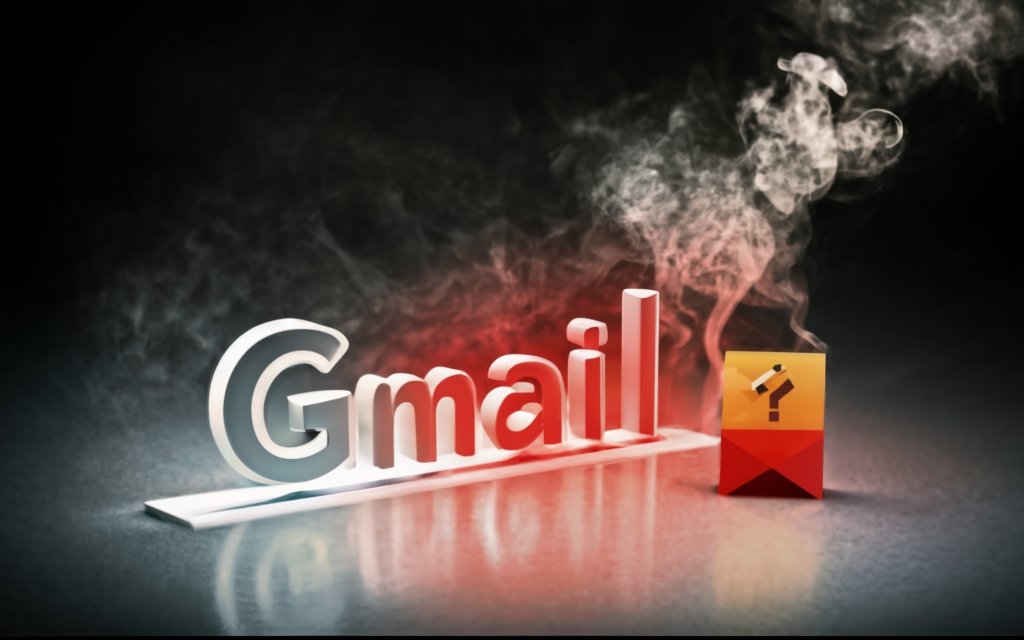
Step-by-Step Guide to Creating a Newsletter in Gmail
Now that you know the benefits of leveraging Gmail for your newsletter, let’s dig into the mechanics of actually building, formatting, sending, and scheduling each edition.
Follow these steps to create a streamlined newsletter workflow that delivers value to your subscribers and grows your list over time.
Set Up Your Gmail Account for Sending Newsletters
The first step is designating a dedicated Gmail account to use as your official newsletter sender.
Use a Custom Gmail Address
Don’t just use your existing personal Gmail address. Instead, register a new one specifically for your newsletter emails.
Some examples:
Choose something clean and professional that identifies the emails are coming from your business, blog, etc.
Make sure you complete the Gmail verification process by clicking the confirmation link after registering your new account. Verification improves deliverability by proving you own the address.
Configure Your Sender Profile
Head into Gmail Settings > Send mail as to configure the sender profile.
Set the “From” name that will display prominently in the inbox when people receive your email. For example:
- Your Company Newsletter
- Your Brand Updates
- Your Name’s Newsletter
Avoid just having it say your name – be descriptive. This builds recognition and credibility for your newsletter over time.
Also upload a profile photo like your logo or headshot to appear alongside your name. This adds a personal touch so your emails aren’t as generic.
Adjust Key Settings
Dive into Gmail Settings > See all settings to tweak:
- Conversation view – Disable this so each newsletter email appears individually in the inbox rather than grouped as a thread.
- Default reply – Set to “Reply all” so you stay looped in on any responses.
- Desktop notifications – Enable notifications when you receive emails. This allows you to promptly address questions or concerns.
- Multiple inboxes – Organize emails with tabs for different segments like Promotions, Social, Updates, etc.
Create Your Newsletter Content
Gmail doesn’t include a traditional editor for crafting nicely formatted newsletter content. That’s where Google Docs comes in handy.
Build a Template Doc
Set up a reusable Google Doc template containing your branded header and footer, preferred fonts, color scheme, logo, and any standard content.
This acts as a starting point for consistently designing each edition of your newsletter.
Draft Your Content
For each newsletter, make a copy of the template and start writing your sections. Consider:
- Introduction – Welcome message, highlight popular stories.
- Feature stories – In-depth articles, how-tos, case studies.
- Promotions – Sales, deals, product updates.
- User-generated – Quotes, reviews, submitted photos.
- Recurring segments – Sections happening every issue like Q&As.
Add eye-catching images throughout your content to break up text. Screenshots, photos, graphics, and illustrations all make emails more visually engaging.
Save and Organize in Google Drive
Once your draft is complete, save it back into Google Drive organized by newsletter volume and date. For example:
- Newsletter Template
- Newsletter July 2022
- Newsletter August 2022
This keeps all your issues centrally accessible for referencing.
Import Subscribers into Contacts
Now it’s time to build your audience! Here’s how to populate your email list:
Upload Contacts CSV
If you’re switching from another provider, export your list as a CSV file and import into Gmail Contacts.
Click Add > Import and select your spreadsheet. All emails will be added as regular contacts.
Add Signup Form
Make it easy to subscribe by embedding a newsletter signup form on your website. Upon submitting:
- Send a confirmation email to double opt-in.
- Use a Gmail filter to automatically label confirmed signups as “Newsletter Subscribers” and add to Contacts.
Segment with Labels
Organize contacts into different segments. For example:
- Newsletter Subscribers
- VIP Customers
- Prospects
- Loyalty Program
Then target relevant content to each group based on their relationship and interests in your business.
Pro tip: Export your lists regularly as a backup!
Compose and Send Your Newsletter
With your content created and audience imported, it’s go time!
Paste Content from Google Docs
In a new Gmail message, copy/paste sections from your Google Doc draft into the body. This brings over all the formatted text, images, etc.
Adjust styling if anything looks off. Use Gmail’s formatting toolbar to customize further as needed.
Address Email Correctly
In the To: field, type your sender name exactly as you configured it previously.
Then under Bcc: add ALL your subscriber contacts to hide addresses.
This prevents exposing emails if someone hits reply all. The Bcc field is hidden from recipients.
Send a Test Draft
Before sending your full subscriber list, always test a draft by emailing it to yourself first.
Check everything on both desktop and mobile:
- Formatting look right?
- Images displaying properly?
- Links working?
Finding issues now prevents sending a flawed newsletter to your whole audience.
Schedule Future Issues
Use Gmail canned responses along with filters and labels to automate sending scheduled, recurring newsletters.
For example, set up a filter to apply a “Send Monthly Newsletter” label. Then create a canned response to send those labeled emails on the first Tuesday of each month.
In short
And that covers the complete workflow for producing polished, professional newsletters within Gmail!
The key is sticking to a consistent schedule, continually testing and optimizing, and providing value that resonates with your subscribers. Treat them well and your list will grow.
Gmail provides all core functionality needed for effective email marketing. Don’t let perceived limitations hold you back from giving it a shot.
Now get out there and engage your audience!
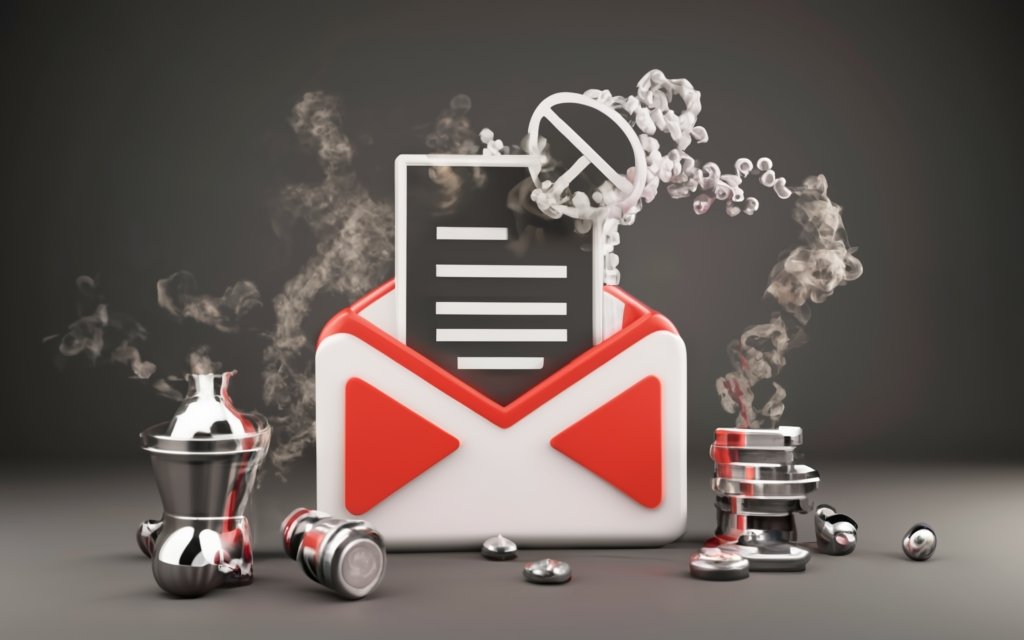
Tips for Creating Effective Gmail Newsletters
You’ve set up your dedicated Gmail account, built your subscriber list, and are crafting great content. Now let’s look at some pro tips and best practices for optimizing your newsletters to drive more engagement.
Include Engaging Subject Lines
Your subject line is the first impression recipients get of your email. An inspiring, curiosity-building subject can pique interest and get them to open and read.
A/B Test Different Versions
Try different phrases and styles to see which perform best by tracking open rates. For example:
- Informational: “New Industry Report Released”
- How-to: “5 Tips for Doubling Sales”
- Curated: “Best of Our Blog: Content Roundup”
- Teaser: “When You See Our Latest Deal…”
Aim for subjects around 6-10 words long. Anything too short may get overlooked, while too long can truncate in the inbox.
Personalize When Possible
Using merge tags to insert the recipient’s first name boosts open rates by making it feel customized. For example:
“Hey [FirstName], check out our holiday gift guide!”
Just be sure personalization fits the context. Keep it relevant.
Make Your Content Scannable
With crowded inboxes, you only have a few seconds to catch readers’ attention before they move on. Optimizing your content for skimming is key.
Break Up Long Sections
Avoid big blocks of dense text. Insert related graphics and callout quotes frequently to let eyes rest in between paragraphs.
Use lists and bullet points for easy digestible takeaways versus long narratives.
Use Descriptive Headers
Format key sections, product features, or tips as bold headers. This lets readers jump to parts most interesting to them.
Numbered lists also convey a quick hierarchy of importance at a glance.
Highlight Key Points
Bold or italicize the most critical sentences and stats you want remembered rather than getting lost in the details.
These textual highlights guide readers to your main ideas even if they don’t read every word.
Link to Landing Pages
Email is meant to continue conversations and engagement outside of the inbox. Weave in links to drive traffic to your site.
Promote New Content
Did you just publish a new blog post or announce a product launch? Insert a button linking to it for easy access.
This showcases your latest initiatives beyond just those getting the direct email.
Track Clicks
Use Gmail’s link tracking to see click-through rates on links in your newsletter. This reveals content resonating with subscribers.
With low response, try reworking copy or placements. High performing links inform future content strategy.
Get Proper Consent
Never add someone to your mailing list without their permission. Follow email marketing best practices to build subscriber trust.
Confirm Opt-Ins
When users sign up through your website forms, send a confirmation requiring them to click and verify before being added. This demonstrates clear intent.
Include Opt-Out Options
Provide one-click unsubscribe links in your footers along with postal mailing address for removal requests. This is legally required in many regions.
Honor all unsubscribes promptly and update your lists. Sending to opted-out contacts damages sender reputation.
In nutshell
Mastering headlines, scannable content, effective calls-to-action, and proper consent ensures your hard work gets opened, read, and drives results.
Keep testing and optimizing your formatting and copy over time. Gmail provides the data needed to refine your strategy.
Now get out there and engage your audience in fresh, compelling ways!
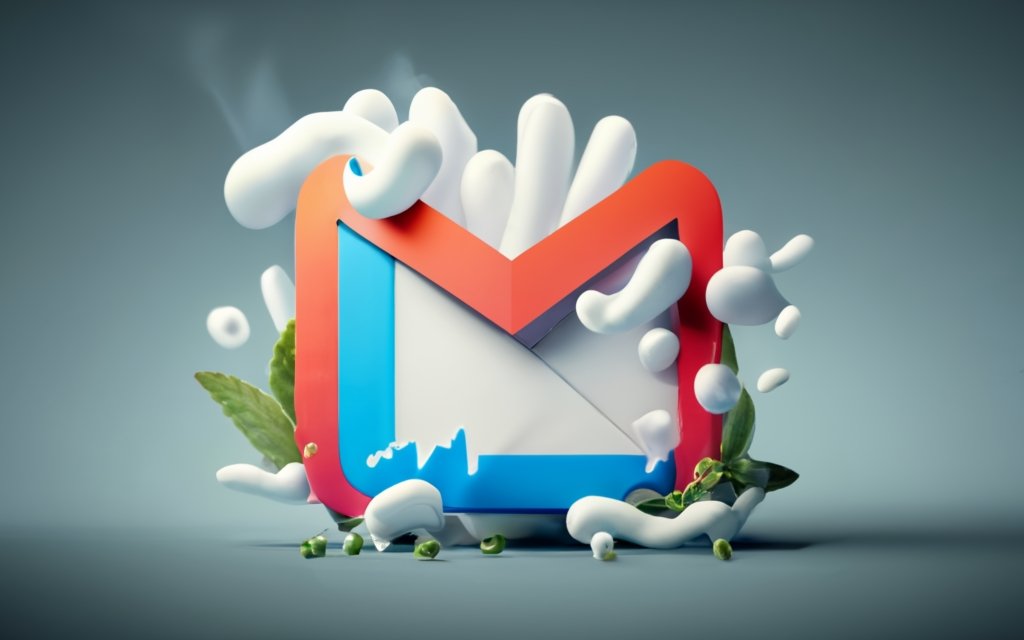
Alternatives to Sending Gmail Newsletters
While Gmail provides an easy free starting point for sending your first newsletter, you may eventually hit limitations that require exploring paid options with more advanced capabilities.
Let’s look at a few leading platforms to consider when you’re ready to upgrade from Gmail.
Mailchimp
Arguably the most popular all-in-one email marketing service, Mailchimp offers both free and paid plans.
Key Features:
- Drag-and-drop email designer
- Automations based on user behavior
- Signup forms and landing pages
- Advanced analytics and reports
- Integrations with CRMs, ecommerce, etc.
Pricing:
- Free plan for up to 2,000 contacts and 12,000 emails/month
- Paid plans start at $9.99/month for up to 500 contacts
Mailchimp is great for growing businesses wanting more design flexibility, segmentation options, and insights from subscriber data.
Constant Contact
Trusted by over 600,000 small businesses, Constant Contact focuses on easy email creation with their drag-and-drop builder.
Key Features:
- Hundreds of mobile-optimized email templates
- Contact management and list segmentation
- Automated welcome emails for new subscribers
- Marketing calendar with scheduled sends
- Surveys and polls to boost engagement
Pricing:
- $20/month for up to 500 contacts
- $45/month for up to 2,500 contacts
- Custom quotes for larger lists
The simplicity and affordability of Constant Contact appeals to beginners not needing advanced functionality.
ConvertKit
Popular with bloggers and creators, ConvertKit takes an audience-building approach beyond just email.
Key Features:
- Landing pages and multi-form signup options
- Tag-based segmentation and broadcasting
- Automations based on tags rather than just dates
- Integration with webinar and course platforms
- Focus on builder creator community
Pricing:
- $29/month for up to 1,000 subscribers
- $79/month for up to 3,000 subscribers
- Plus custom plans
For digital entrepreneurs who want to grow their subscriber base across multiple channels, ConvertKit is a great fit.
In short
While Gmail provides the basics, you may eventually benefit from added design flexibility, segmentation, automation, and insights with a paid platform.
But don’t feel like you need to upgrade until you genuinely outgrow what Gmail offers. For many starting out, it has all they need to build their initial audience.
Once you have a strategy in place and are ready to scale, tools like Mailchimp, Constant Contact, and ConvertKit help take your newsletter efforts to the next level.
Recap and Conclusion
Let’s recap the core takeaways from our guide on creating and sending newsletters with Gmail:
- Gmail provides a free, easy way to start email marketing without complex setup.
- Leveraging Google’s trusted infrastructure improves deliverability into subscribers’ inboxes.
- Importing existing contacts from your Gmail makes subscriber list building a breeze.
- The familiar Gmail interface means composing newsletter emails feels natural.
- Handy analytics like opens, clicks, and unsubscribes are built right into your inbox.
- Labels allow you to segment contacts and target content to different audiences.
- Canned responses and filters enable scheduling recurring autosends.
- Designing content in Google Docs gives you formatting flexibility lacking in Gmail.
- Effective copywriting techniques boost open and clickthrough rates for engagement.
- Following best practices like double opt-in and inclusion of unsubscribe links maintains subscriber trust.
While Gmail lacks some advanced automation and design capabilities found in paid platforms, it delivers on the fundamentals for launching a basic newsletter.
The key is sticking to a consistent publishing schedule, continually testing subject lines, content formats, and layouts. Measure what resonates with your audience and refine over time.
For solopreneurs and bootstrapped startups, tapping into Gmail’s free toolkit allows you to build an audience without straining your budget.
Once you have a solid subscriber base and want more insights to fine-tune your strategy, consider upgrading to a paid provider like Mailchimp.
But don’t think you need to spend money from day one. Start simple by embracing Gmail as your free all-in-one newsletter solution.
Then let your list growth and engagement dictate when to level up your email marketing efforts.
Whether you’re a blogger sharing curated content or a coach providing exclusive tips to your students, Gmail newsletters help you foster community and strengthen relationships with your ideal audience.
So what are you waiting for? Put these tips into action and watch your reach extend beyond the inbox.
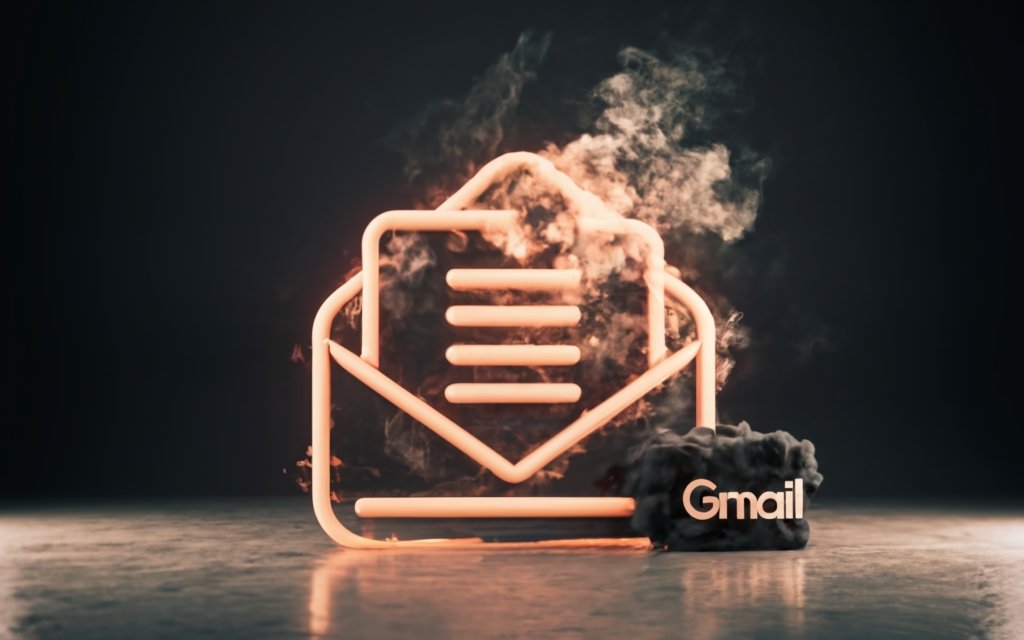
Summary
- With its free price, built-in contacts, and trusted deliverability, Gmail provides an ideal starting point for sending your first newsletter.
- Set up a dedicated account, import your subscriber list, customize sender settings, and leverage Google Docs for creating formatted content.
- Schedule recurring broadcasts, segment your audience, optimize subject lines, make content scannable, and track engagement right within Gmail.
- Follow best practices like double opt-in confirmation and easy unsubscribes to build trust and grow your list.
- Once you outgrow Gmail’s basic capabilities, consider paid platforms like Mailchimp for more advanced functionality. But don’t underestimate how far you can scale with Gmail alone.
- The key is sticking to a consistent publishing schedule, testing different approaches, and continually providing value to your subscribers.
- With the right strategy, Gmail can take your newsletter efforts quite far. So embrace its versatility to start engaging your audience in new ways today.
Frequently Asked Questions
Q: Why should I use Gmail versus Mailchimp or Constant Contact for my newsletter?
A: Gmail is 100% free and easy to get started with if you already use Gmail daily. It provides all the core features you need for basic email marketing.
Q: How many emails can I send through Gmail?
A: Gmail has no limits on the number of emails you can send, making it great for growing lists. Just be sure to follow best practices to maintain deliverability.
Q: Can I segment my Gmail contacts into different lists?
A: Yes, use labels to create different newsletter segments like “customers,” “prospects,” etc. Then target emails appropriately.
Q: How do I create nicely formatted emails in Gmail?
A: Draft content in Google Docs, then copy/paste sections into Gmail. This brings over formatting like images, fonts, colors, etc.
Q: What metrics can I track for my Gmail newsletter?
A: You can easily see opens, clicks, unsubscribes, and replies right within Gmail to gauge engagement.
Q: How do I schedule my Gmail newsletter to send automatically?
A: Set up filters and canned responses based on labels and timing. For example, a monthly newsletter every 1st Tuesday.
Q: What’s the best way to grow my subscriber list?
A: Make it easy to subscribe through your website, social media, and email signature. Offer an incentive like a discount or exclusive content.
Q: How do I switch from Gmail to Mailchimp or another provider?
A: Export your Gmail contacts as a CSV file, then import into the new system. Setup and send your first campaign from there.
Q: What are your top tips for creating effective Gmail newsletters?
A: Compelling subject lines, scannable content, personalized copy, prominent calls to action, mobile optimization, and valuable information readers want.

